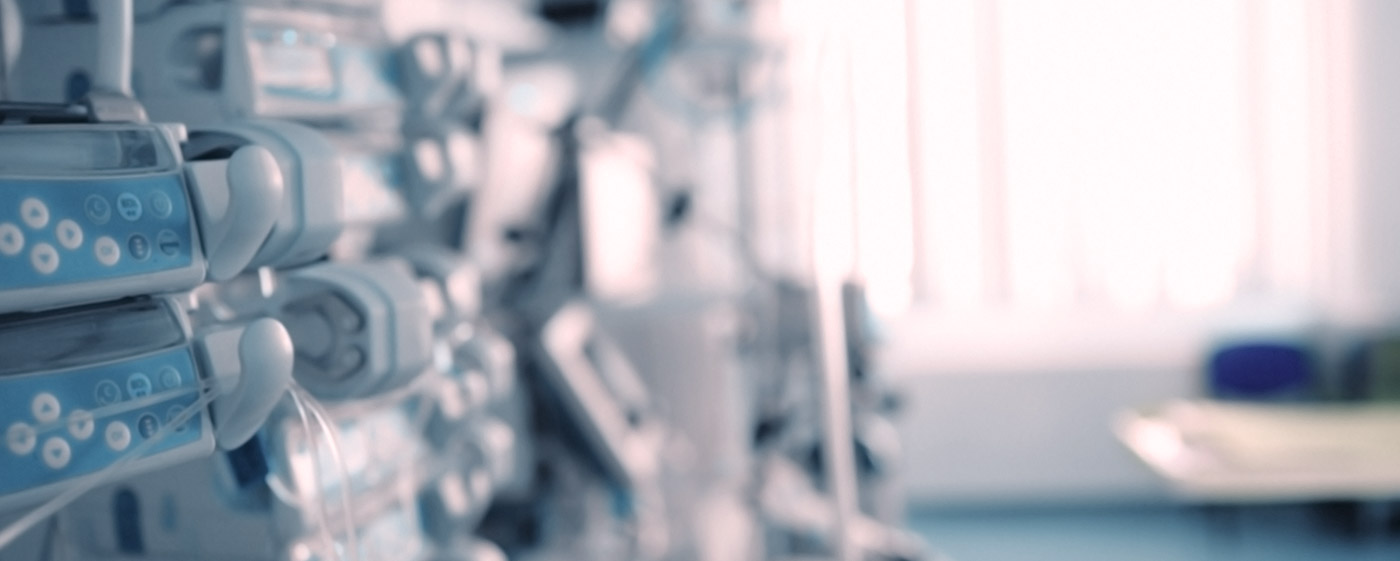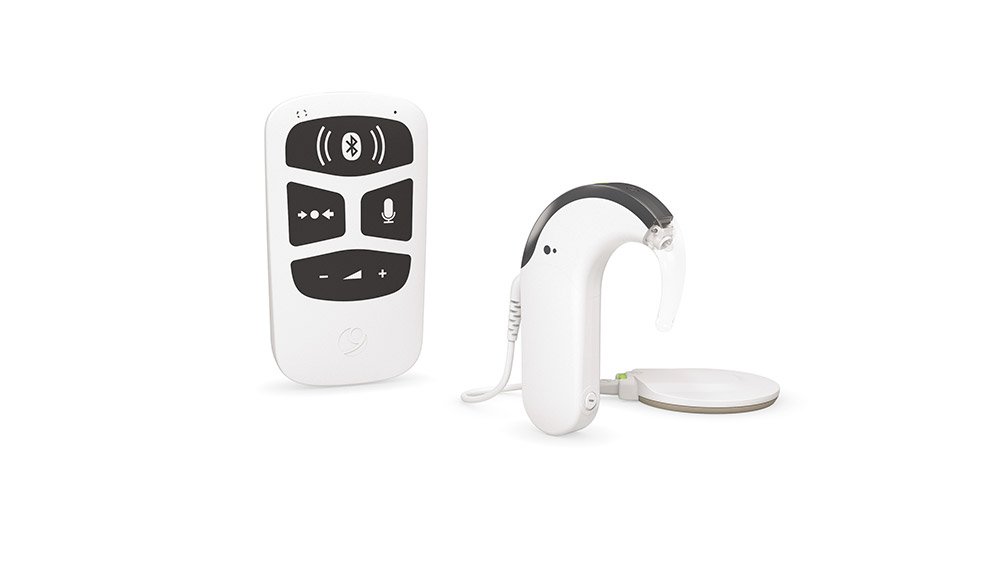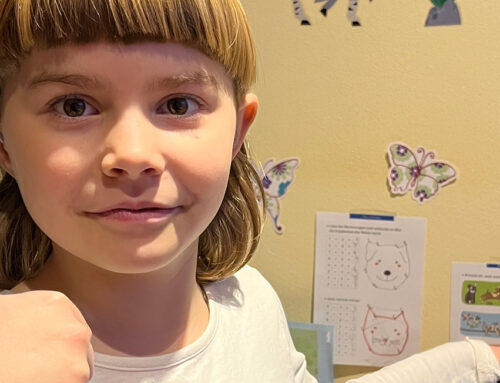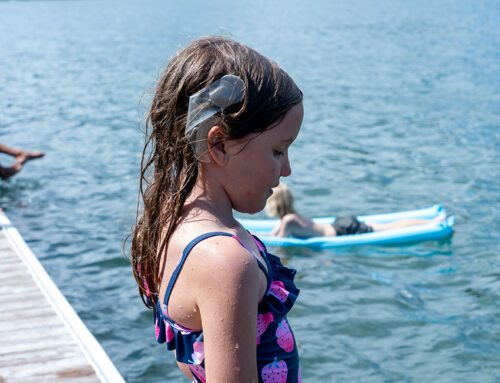Working in the intensive care unit with CI
US nurse Alley Mason works in the intensive care department of a clinic in Texas and is a cochlear implant user. She tells of the special challenges she has to overcome and what her working day looks like on her own YouTube channel.

Alley Mason became deaf at the age of three as a consequence of bacterial meningitis. A cochlear implant in the right ear enables her to hear at least on one side. Her hearing impairment has not stopped her from being trained as a nurse.
“When I got to nursing college, the first problem I was confronted with was how to use a stethoscope with a CI.“ The earpieces of conventional stethoscopes feed directly into the outer aural canal which for CI users is as useless as using in-ear headphones. “I had a moment of panic about what I would do. But then I soon found a stethoscope that any headphones could be attached to and transform it into a stethoscope earpiece “, that is, with large clamshell- headphones that can be placed comfortably over the processor. Or you can connect the headphones output to the DAI, the direct audio input to the CI via a standard audio cable.
“I use a MED-EL cochlear-implant with a SONNET processor and the MED-EL AudioLink”, where sister Alley plugs in the output of the stethoscope. “The AudioLink then makes a Bluetooth-connection to my cochlear implant.” The nurse leaves the AudioLink switched on in stand-by mode throughout her shift. “If I then switch on the stethoscope, it is ready to use in three seconds. That is about how long it takes for someone to take their stethoscope out and put it in their ears.”
Everyday work with a CI
The young Texan finished her training last December and started her career in the intensive care at the start of 2020. She works on the night shift from seven o’clock in the evening until seven o’clock in the morning: “I wake up between 14:30 and 15:30. I don’t sleep with my CI switched on, so I am completely deaf while I sleep . I use the vibration alarm on my watch to wake up. My assistance dog Saki is a great help if I oversleep.”
“Normally, I go to work at about 6 o’clock”, says Mason. The 24-hour battery life of a RONDO 3 would mean I could ensure that I can hear even a 13-hour shift. But Mason hears with a SONNET and so relies on single-use batteries: “I always have at least two sets of reserve batteries for my CI with me: one in the trouser pocket of my nursing uniform and one in my bag. I can never do without hearing when I am on duty. I’m responsible for the well-being of my patients and their lives so I can’t go round without batteries.”
“At the start of every shift on the intensive care unit, every patient’s heart, lungs and stomach are checked with the stethoscope so that every patient is checked at least every twelve hours. This special stethoscope is the only aid that I use routinely at the moment. The MED-EL AudioLink also has a function to use it as a microphone. If, say, I am discussing something with another nurse and there is a lot of background noise, which can happen quite a lot in the intensive care unit, then I can give the other nurse the AudioLink. She then speaks directly into the MED-EL AudioLink and so directly into my cochlear implant.”

The MED-EL AudioLink provides great support to Alley Mason in her job. ©MED-EL
Closed-Loop: Secure Communication helps at working with a CI
“On the intensive care unit, we look after seriously ill people. It is often about keeping them alive. That means that I often get important information called out to me and I have to ensure that I have heard everything properly.“ A CI enables deaf ears to hear but it cannot completely replace healthy natural hearing. Hearing on both sides is important for good understanding of speech. The so-called Closed-Loop communication doesn’t just help the 22-year-old CI user to avoid misunderstanding important information or doctor’s instructions.
“If a patient has, for example, a very slow pulse and the doctor says to me: ‘Give him 0.5 milligrams of Atropine‘, then with the Closed Loop communication I would then face the doctor and repeat: ‘I’m giving 0.5 milligrams of Atropine‘, before doing so. If I hadn’t understood the doctor properly, he could stop me in time and correct it.“ Misunderstandings in the intensive care unit could have serious consequences: “That’s why everyone in my department uses this Closed-Loop communication. It is especially helpful to me. It gives me the certainty that I have understood right.”
“Since we find ourselves in the middle of the COVID 19 outbreak, the guideline that applies in my hospital is that everyone has to wear a mask.“ Like many hearing-impaired people, Mason also uses lip-reading completely intuitively as a support in communication. “That isn’t possible now. That makes it harder work for me to understand people when they are speaking through their masks.“ Regular listening breaks and the security of the Closed-Loop communication are important not just to her, but also for her colleagues with normal hearing on the intensive care unit at the current time.
“Listening breaks helps better understanding”

Alley Mason copes brilliantly with her stressful everyday work thanks to her CI. ©private
“As a nurse on the intensive care unit, I always have to listen carefully: when working together with colleagues; when listening out for the machines, whose alarms usually tell me that something is wrong.“ But concentration is also needed in the intensive care unit. “I always have to think ahead and expect a problem at any time: if my patient’s heartbeat slows or if his blood pressure goes up or down.”
Breaks are especially important in a job needing so much concentration. Every nurse in Mason’s department gets an uninterrupted 30-minute break every day which the CI user configures as a listening break: “I spend my 30-minute lunch break alone. It is very rare that I speak to anyone in my break. I use this time to re-charge my brain.” During this time, she is only available for emergencies via her pager.
Mason thinks a listening break like this is good for anyone with a hearing problem: “that is very important because we as people with hearing difficulties have to work three times as hard as everyone else to correctly interpret what is said to us. A listening break like this really helps to understand better through the rest of the day.”
Acoustic Indications Instead of Directional Hearing
“One challenge for me as a nurse is that I cannot tell what direction a noise is coming from.” The ability to localise sounds is learned in early years along with speech development, and needs bilateral hearing. Although she is deaf in both ears, the American only had an implant fitted on one side. “For me, it’s really helpful that all acoustic alarms in the hospital also have a corresponding light signal. If the breathing apparatus bleeps, for example, the display on the ventilator also illuminates. If the infusion pump bleeps, the display on the infusion pump lights up.”
“I don’t have any difficulty hearing the difference between sound pitches and recognising what type of alarm has been triggered. So, if I hear a breathing alarm, i know that it’s from the breathing machine. But if I’m not sure whether an alarm is coming from the breathing apparatus from my patient’s room or another room, then I just glance into my patient’s room and see what is lit up.”
Hearing Problems are no Excuse!
Deaf people and the hard of hearing often complain that they feel isolated by the masks everywhere. Mason can empathise with the problem: “Even if colleagues in the department are just chatting, they still wear their masks. If more than two people are speaking, I find the conversation hard to follow”; she describes the feeling of being left on the side-lines, becoming an outsider to the conversation. As a new entrant to the profession, she tries to build relationships with the colleagues but: “The masks make that somewhat harder. Of course, I am not using that as an excuse. I find other ways to make contact with people. But I understand the feeling of isolation that some people with hearing losses are getting right now. I am very lucky to have a cochlear implant at this time!”
“As a nurse with a CI, I don’t just come across special challenges, I have also noticed something really cool!“ Nurse Alley tells of patients in the intensive care unit who are confronted with great life changes: after a stroke or after some treatments when they are suddenly faced with severe speech, hearing or visual problems. “I wear my hair up at work so that my CI is really obvious. The patients see my CI. So if I have difficulty hearing, and they have problems with speaking, hearing or seeing, then that connects us, and I can make better contact with them.”
Alley Mason tells of the life and experiences of a nurse in intensive care on:
https://www.youtube.com/c/NurseAlley
https://nursealley.com/
https://www.facebook.com/alley.mason






